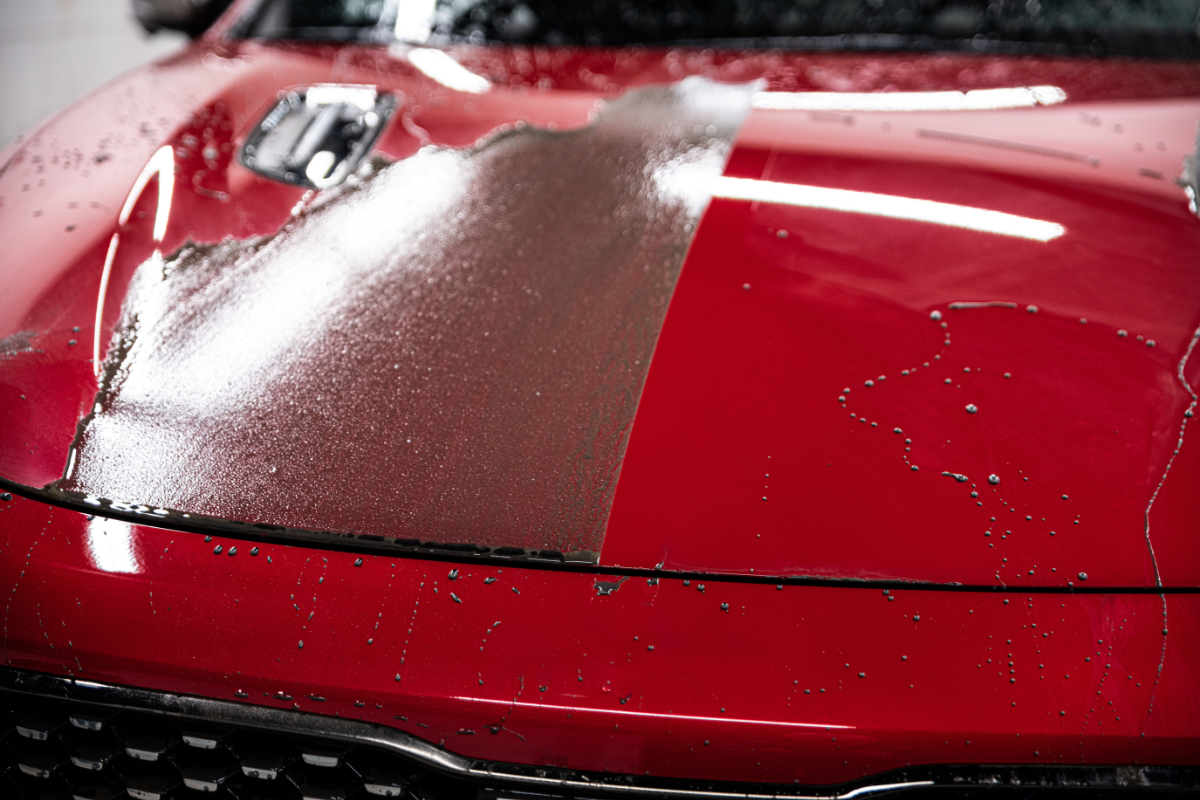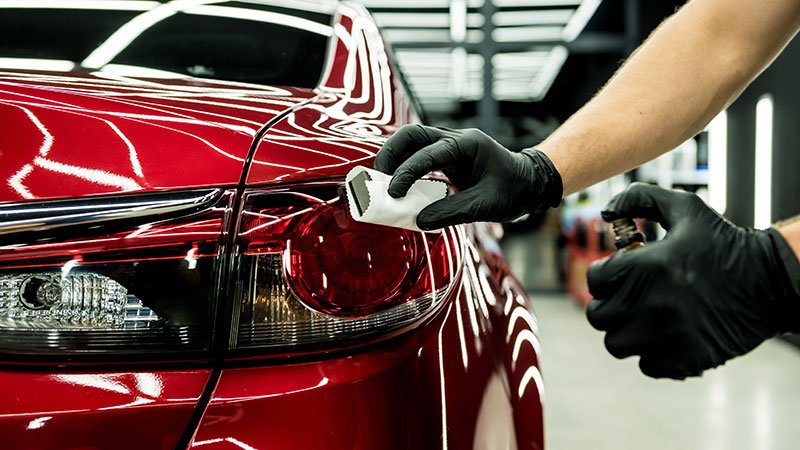Why Pick Ceramic Coatings San Jose for Long-Lasting Luster
Why Pick Ceramic Coatings San Jose for Long-Lasting Luster
Blog Article
Introducing the Scientific Research Behind Ceramic Coatings: Exactly How Does It Job and Why Is It Above Conventional Options?
Ceramic coverings have been getting popularity in numerous sectors for their extraordinary performance and resilience. The scientific research behind these layers surpasses mere surface defense, delving into the elaborate chemistry that makes them stand apart from traditional options (ceramic coatings san jose). Understanding how ceramic coverings work and why they surpass standard options is critical for those seeking to enhance the long life and resilience of their products. So, exactly what establishes ceramic coverings apart, and exactly how do they achieve such impressive results?
The Chemistry of Ceramic Coatings
In comprehending ceramic layers, delving into the elaborate chemistry behind their composition is essential for realizing their performance and sturdiness. Ceramic coverings are largely composed of silicon dioxide (SiO2), which creates a safety and solid layer when related to numerous surfaces. This chemical framework offers phenomenal resistance to warm, chemicals, and corrosion, making ceramic finishes highly searched for for a variety of applications.
The chemistry behind ceramic coverings entails the formation of covalent bonds between silicon and oxygen atoms, developing a rigid network that improves the coating's durability and durability. Furthermore, the visibility of other aspects such as titanium, aluminum, and zirconium additional boosts the coating's homes, using raised hardness and adhesion to surface areas.
Recognizing the chemical structure of ceramic coatings permits the customization of formulas to fit details requirements, whether it be for vehicle, industrial, or residential functions. By harnessing the power of chemistry, ceramic layers continue to lead the way for remarkable security and efficiency in different sectors.
Advantages of Ceramic Coatings

As a result, ceramic finishings make cleansing and maintaining surfaces much easier and less time-consuming. Overall, the plethora of advantages provided by ceramic finishings make them a superior alternative contrasted to standard covering techniques.
Just How Ceramic Coatings Bond
Ceramic layers bond to surfaces via a procedure that includes molecular bond and chemical communications. When a ceramic finish is put on a surface, it forms a strong bond by chemically adhering to the surface area at a molecular degree. This bond is produced via the development of covalent bonds, which are exceptionally strong and resilient. The ceramic layer's particles pass through the pores of the surface area, developing a limited grip that resists separation.
Moreover, the chemical interactions between the ceramic layer and the surface area further boost the bond. ceramic coatings san jose. These interactions permit the ceramic finishing to develop a continuous and smooth layer on the surface area, supplying exceptional protection and resilience. Unlike conventional finishings that may rest on the surface without fully bonding, ceramic coverings produce a permanent bond that is resistant to chemicals, UV rays, and rough ecological conditions

Basically, the bonding mechanism of ceramic finishings ensures a effective and long-lasting protective layer that exceeds traditional layer choices. This exceptional bond adds to the durability, scratch resistance, and durability of ceramic coatings, making them a favored choice for numerous applications.
Sturdiness of Ceramic Coatings
The exceptional durability of ceramic finishings stems from their durable molecular attachment and chemical communications with surfaces, making sure a long lasting safety layer that exceeds standard covering options. When used, ceramic layers create a solid bond with the substratum, developing a resilient obstacle versus numerous ecological stress factors such as UV radiation, chemicals, and abrasions. This bond is so secure that it can withstand the roughness of daily usage without degrading or weakening quickly.
Unlike standard finishings that might deteriorate over time, ceramic coverings keep their honesty for an extended period, offering long-lasting security for the underlying surface area. On the whole, the exceptional longevity of ceramic coverings makes them an exceptional selection for securing a vast range of surface areas in various applications.
Ceramic Coatings Vs. Standard Alternatives
In contrast to conventional finishing methods, ceramic finishes use a distinct blend of durability and safety abilities that set them apart in numerous surface area protection applications. Conventional options such as wax or sealants give a momentary layer visit of defense that can put on off rapidly, calling for constant reapplication. On the other hand, ceramic finishings develop a solid bond with the surface, developing a semi-permanent or irreversible barrier that is highly immune to abrasion, chemicals, UV rays, and severe temperature levels.
Furthermore, ceramic finishes supply remarkable hydrophobic residential or commercial properties contrasted view to traditional coatings. The hydrophobic nature of ceramic finishes creates water to bead up and roll off the surface, lugging dust and contaminants with it. This self-cleaning result assists to preserve the surface area's cleanliness and gloss for extended periods, decreasing the need for frequent upkeep.
In addition, ceramic layers have a thicker layer compared to conventional alternatives, supplying boosted scratch resistance and defense against minor effects. This resilience makes sure lasting efficiency and aids maintain the visual charm of the treated surface for a prolonged period.
Final Thought
To conclude, the scientific research behind ceramic layers depends on their chemical composition and bonding residential look at here now properties, making them above traditional alternatives. The benefits of ceramic coverings consist of increased durability and security for surfaces. By understanding exactly how ceramic finishings work and their advantages over traditional alternatives, one can make educated decisions when taking into consideration coating options for various applications.
Unlike conventional coverings that may rest on the surface without totally bonding, ceramic finishes develop an irreversible bond that is resistant to chemicals, UV rays, and extreme ecological problems.
The outstanding longevity of ceramic layers stems from their robust molecular attachment and chemical interactions with surfaces, ensuring a sturdy protective layer that surpasses traditional covering options.Unlike typical finishes that might degrade over time, ceramic coatings keep their honesty for an extensive duration, supplying lasting defense for the underlying surface.In comparison to traditional layer techniques, ceramic layers use an unique mix of longevity and safety capabilities that establish them apart in different surface area protection applications. By understanding how ceramic coverings job and their benefits over conventional alternatives, one can make informed choices when thinking about finishing alternatives for numerous applications.
Report this page